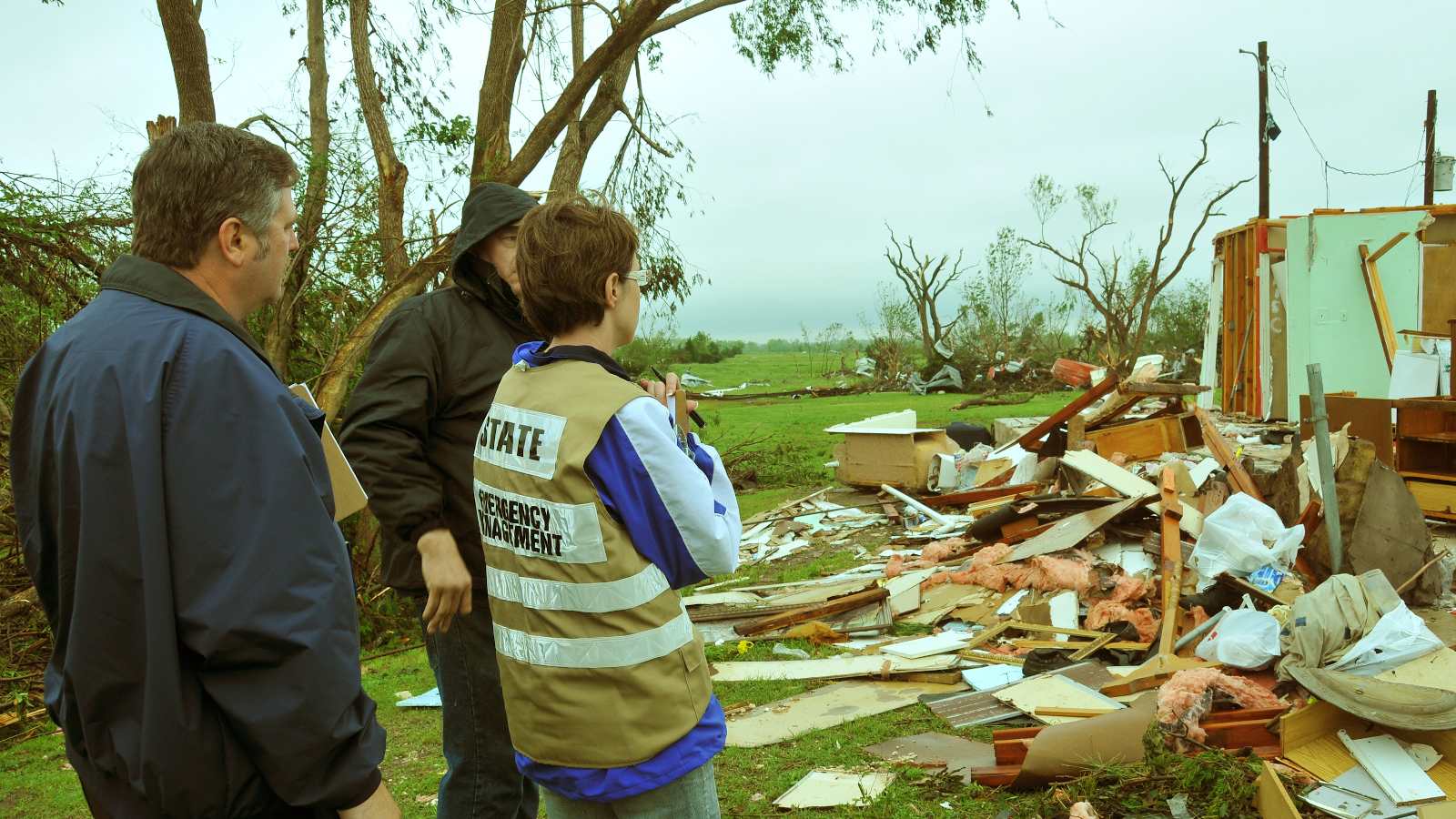
After disaster strikes is not the time for a homeowner to discover what an insurance policy does and doesn't cover. | FEMA
Homeowners spend on average $1,211 a year on their insurance premiums, but those policies don't cover every disaster.
High-risk areas for natural disasters, like Florida with tropical storms and hurricanes, pay much higher premiums – $1,951 on average. Policyholders are more likely to file claims there, especially since more than 40% of all hurricanes nationwide hit Florida every year, insurance company Clovered said.
Four types of coverage make up a standard home insurance policy, Money.com reports: coverage for the structure, for personal belongings and other content, temporary living expenses in case you get displaced, and liability protection.
Policies typically cover damage to your home from a wide range of natural disasters, including hurricanes, tornados, snowstorms, lightning, or fires, Angi Orbann, vice president of property for personal insurance at Travelers Insurance, told Money.com.
A shed, gazebo, fence or garage on a homeowner’s property generally gets covered for about 10% of the amount the structure of the house is insured for, Janet Ruiz, director of strategic communications at the Insurance Information Institute, said to Money.com.
Mortgage lenders require insurance policies to cover the total loss of a home, which equals the cost to rebuild the home to the exact condition as when the policy began, according to Money.com. This means it covers the same type and quality of materials used in the home’s construction.
Homeowners who buy an insurance policy to cover the replacement cost of their homes and not the fair market value won't see payouts cut by depreciation.
Policies cover damage or theft for 50% to 70% of the insurance on the structure of the home. Insurance carriers may require policyholders to provide evidence of those belongings if they file a claim.
The Insurance Information Institute recommends homeowners take photos of their possessions and store them on the cloud and not a device. A home computer or laptop could get destroyed in a disaster, leaving the homeowner without the claims evidence that’s required.
If the homeowner or a family member does something that causes harm to other people or their property while on the property, liability protection in standard homeowner’s insurance covers lawsuits that may arise. The coverage pays for what it costs to defend the homeowner and what the court may award – but only up to the limit of your policy. Those limits usually start at $100,000, according to Money.com.
“We recommend looking at your assets to determine how much coverage you need,” Ruiz told Money.com. “If you have a $1 million home, you probably want $1 million of liability coverage.”
The cost of living away from home while a home gets rebuilt after a disaster can be covered under a typical home insurance policy, according to Money.com. These temporary living expenses may include hotel bills, meals and living expenses listed in the policy. The homeowner should check policies to see if the policy sets time or reimbursement limits.
A homeowner who rents out part of the home will have coverage in most policies for rent that can’t be collected from tenants while the home is rebuilt.
Homeowners need to understand what their policies do not cover or they may face a large unexpected expense.
Standard policies won’t cover what floods, earthquakes or normal wear and tear cause to the home. A homeowner who wants to buy a home in a flood zone should expect the mortgage lender to require flood insurance.
The federal government’s National Flood Insurance Program and some private insurers sell premiums at an average cost of $700 per year. That price will vary based on the property elevation and other flood risk factors, Money.com said. Price quotes for properties in flood zones can be found at FloodSmart.gov.
Homes outside of flood zones still risk damages from floods.
“Just because your home is not in a designated flood area doesn’t mean it’s immune to a flood,” Orbann said.
He advises homeowners to speak with a local insurance agent who should know the area’s flood risk.
Basic homeowner’s insurance doesn’t cover expensive items like art, jewelry or collectibles. Some companies might provide limited coverage up, but to get them insured at full value, a professional appraisal will be required.
An insurance company will add a special personal property endorsement or floater to the homeowner’s insurance policy. Rates vary but expect to add 1% to 2% of the value of each item to the policy, Geico said. A $5,000 engagement ring could add $50 to the annual premium.
Homeowners running a business from their homes should consider a business rider attachment to protect office equipment. Most policies provide only $2,500 coverage for business equipment. By adding as little as $25, the policy limit could double, the Insurance Information Institute said.






 Alerts Sign-up
Alerts Sign-up